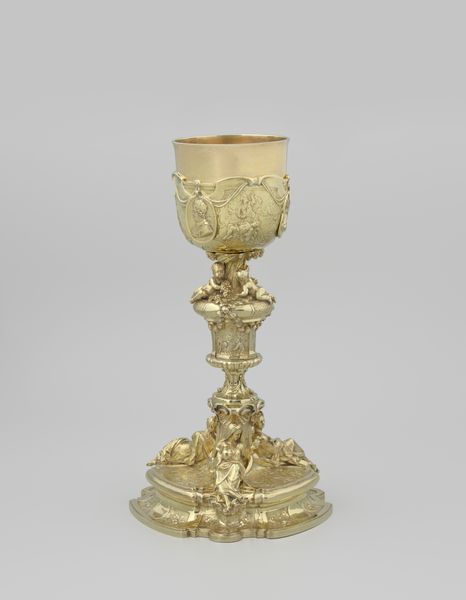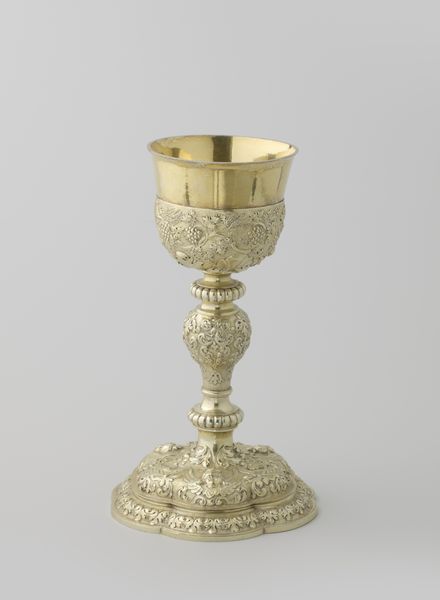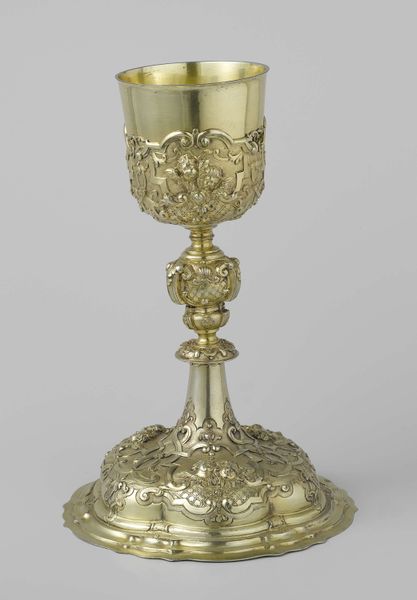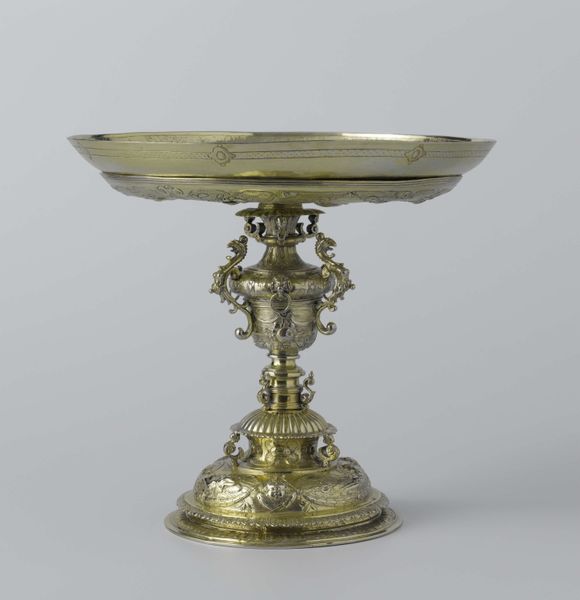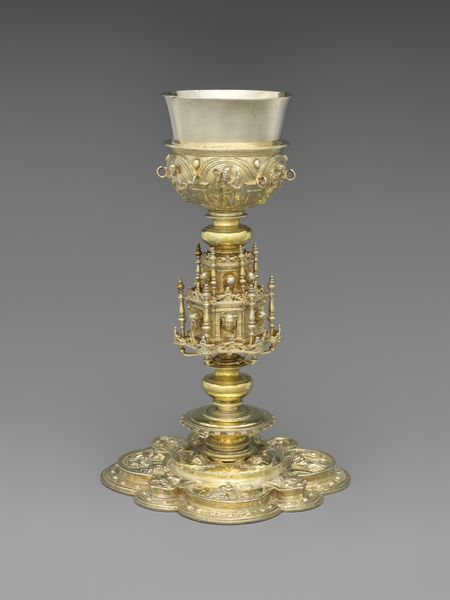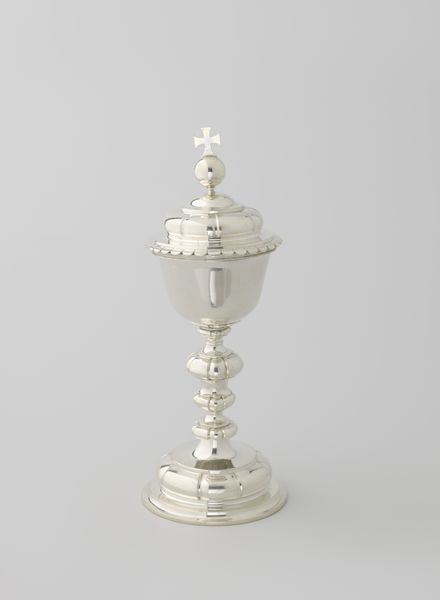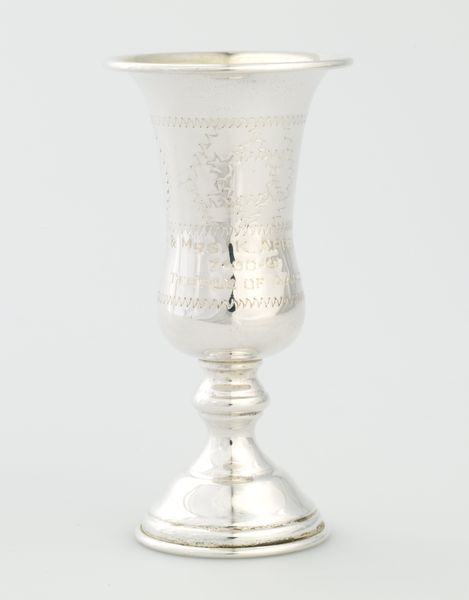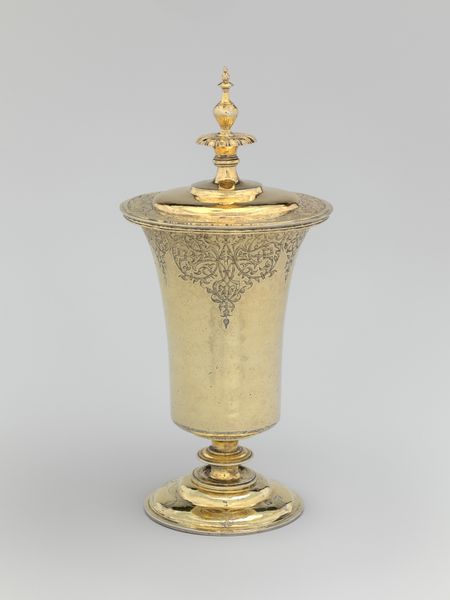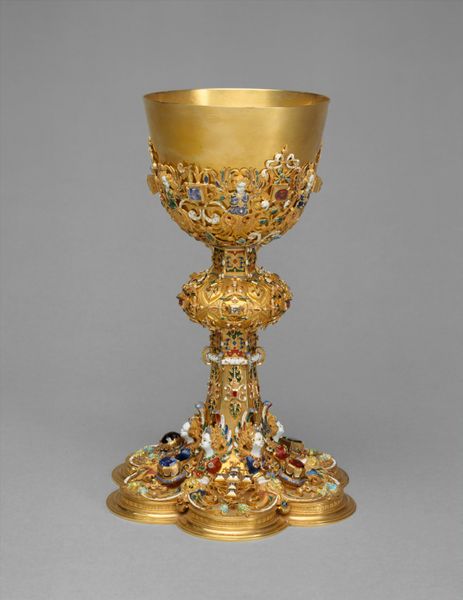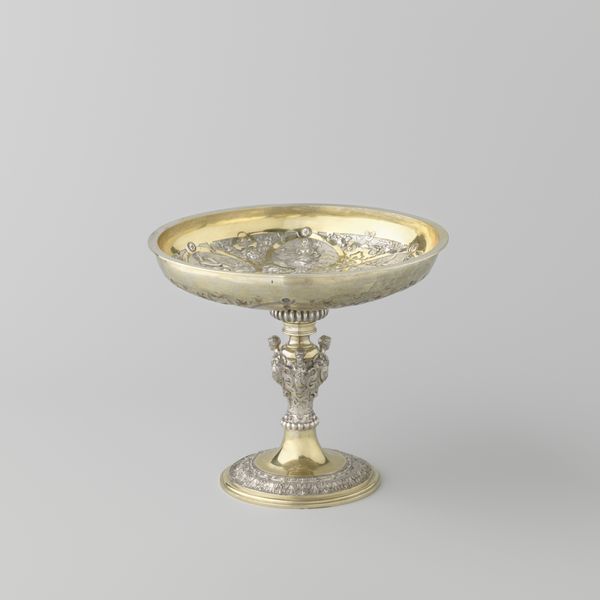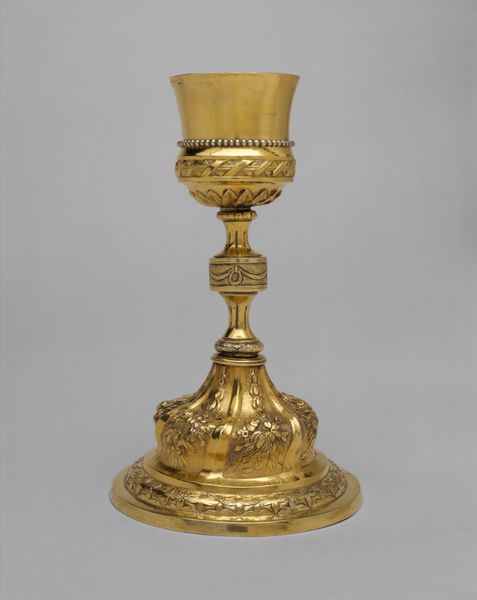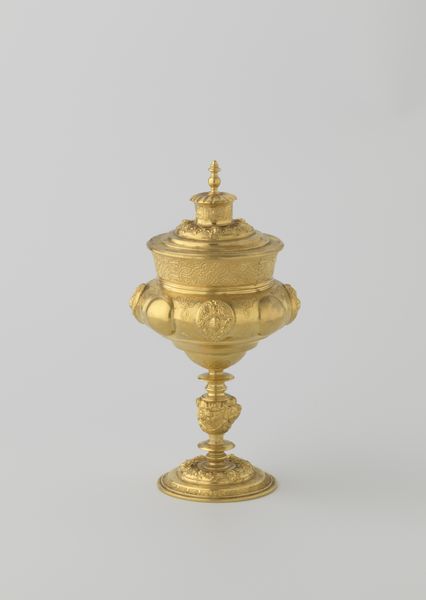
metal, gold, sculpture
#
baroque
#
metal
#
gold
#
sculpture
Dimensions: height 30.5 cm, diameter 20.6 cm, weight 934 gr
Copyright: Rijks Museum: Open Domain
Curator: I'm struck immediately by its regal nature. Editor: Indeed. What we have here is a gilded "Miskelk," or communion cup, crafted in 1730 by Joh. Michaël (II) Ernst. Its Baroque style is evident. Curator: Baroque certainly, yet the sheer opulence is almost overwhelming. Look at the density of detail on the base and cup, a flurry of ornamental extravagance. The use of gold elevates this into something more than a mere vessel. The weight, both visual and physical, speaks of status. What historical narratives are we supposed to unpack with such status display? Editor: Considering the period, we must acknowledge the church's influence. The Miskelk represents more than a place of faith—it embodies a societal hierarchy. Its golden materiality is of vital semiotic value, pointing at ideas around religious authority, access to resources and power that are exclusive. Curator: I see your point about status, however I must stress, that the use of golden objects in the baroque period can reflect on the political unrest of that moment. Even now, the glimmer is undeniable. Is it for the greater glory, or is there some power abuse intended? Who was truly able to share a drink using such cup? Editor: Precisely! And what do we make of the relationship between form and function? The complexity defies a comfortable grasp. The reflective surface both attracts and resists engagement. Curator: It reminds us that sacred and secular objectives have been intertwined in art for a long time. The Baroque style seems well served by the gold in this piece. Editor: An important reminder. Ultimately, analyzing the materiality and technique alongside the societal conditions reveals the deep symbolism inlaid in this singular form.
Comments
No comments
Be the first to comment and join the conversation on the ultimate creative platform.
